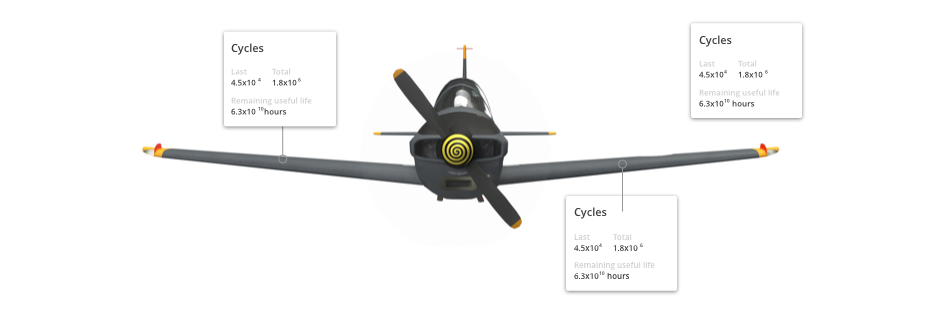SHM TB30
Methodology and
tools
for assessing
he structural health
and Life Extension
of legacy aircraft
The SHM-TB30 project aims at creating and developing an innovative data analysis system through the implementation of a methodology and respective advanced tools for assessing the structural condition of an aircraft fleet.
SHM TB30
The project seeks to implement an innovative program for the management of the structural condition of aircraft fleets that includes monitoring of usage (operating load), the structural condition (diagnosis of structural health) and the management of the consumption of its useful life (prognosis of the condition). The integration of the operational loading monitoring (OLM - Operational Monitoring Loading) and the diagnosis of the condition (SHM) will develop new tools that enable the assessment of the structural condition of the aircraft with reduced instrumentation (sensors and data acquisition systems), reducing costs.
The strategy includes: 1) the complete instrumentation of one aircraft; 2) the computation of transfer functions (flight data- operational loading-damage-life consumption); 3) the reduced instrumentation of the remaining fleet (to reduce sensorization costs) and; 4) the integration of data and information on a structural health management platform. These results define a methodology to implement an effective program of evaluation of the structural condition of critical components. Besides the aspects mentioned above, the instrumentation will allow evaluate and optimize the aircraft's maintenance plan, once known the severity of operation. The methodology is extensible and applicable to any fleet and aircraft type.

OBJECTIVES
1
Full sensorization of an aircraft fleet, enabling an in-depth knowledge of its structural condition;
2
Define a numerical methodology for the evaluation of the structural condition of aircrafts, in view of maintenance plans optimization and life extension of the aircraft fleet;
3
Relate the operational loads (OLM) of aircraft with structural damage and lifetime consumption of critical components;
4
Integrate the methodologies and numerical tools developed in the structural health management platform PRODDIATM Aero.
5
Develop and implement numerical methods for structural damage assessment and prognosis tools of the structural condition of critical components;
RATIONALE
Intensively Monitored Aircrafts (IMA) enable to establish the relation (transfer function) between mission loading profile and stress at pre-selected critical components. Mission loading profiles, obtained for the Less instrumented Aircrafts (LIA), are mapped to stress, through the application of transfer functions, enabling the “virtualization” of strain sensors and the output of stress transients at pin-pointed structural hotspots.

MISSION LOADING MONITORING
The sensorization scheme considered for the LIA and IMA aircrafts, together with the numerical methods implement, allow to output mission loading profiles, asses the loading severity of each mission and respective life consumption for each aircraft.

MATERIAL CHARACTERIZATION AND CHARACTERIZATION OF STRUCTURAL HOTSPOTS
Structural hotspots were numerically verified to validate the positioning of strain-gauges, ensuring the extraction of mission data in zones where it is more probable to be precursors of fracture due to a more severe loading conditions. In this context, material behaviour was duly characterized, namely the fracture propagation dynamics, with the material samples being excited with loading conditions obtained directly from flight missions.

REMAINING USEFULL LIFE


Based, only data captured during flights, the numerical tools developed and implemented outputs critical values such as accumulated fatigue damage and Remaining Useful Life (RUL) for each of the components monitored. This information is crucial for the rescheduling of maintenance operations and for the mission’s distribution on the fleet.
